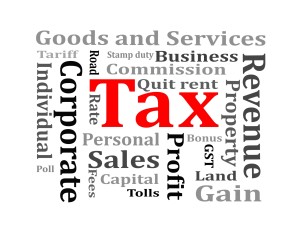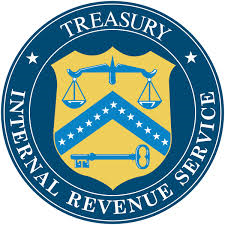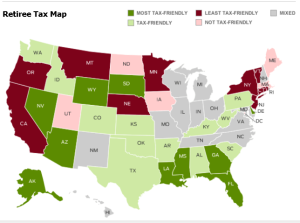January 15, 2017 : 4th Quarter 2016 Estimated Tax Payment Due If you are self-employed or have other fourth-quarter income that requires you to pay quarterly estimated taxes, get them postmarked by January 15, 2017.
April 18, 2017: Individual Tax Returns Due for Tax Year 2016 If you haven’t applied for an extension, e-file or postmark your individual tax returns by midnight April 18, 2017.
ALSO due on April 18, 2017:
Individual Tax Return Extension Form Due for Tax year 2016 Need more time to prepare your tax return? File your request for a tax extension by April 18 to push your deadline back to October 17, 2017.
1st Quarter 2017 Estimated Tax payment Due If you are self-employed or have other first-quarter income that requires you to pay quarterly estimated taxes, get your Form 1040-ES postmarked by April 18, 2017.
Last Day to make a 2016 IRA Contribution If you haven’t already funded your retirement account for 2016, do so April 18, 2017. That’s the deadline for a contribution to a traditional IRA, deductible or not, and a Roth IRA. However, if you have a Keogh or SEP and you get a filing extension to October 17, 2017, you can wait until then to put 2016 money into those accounts.
June 15, 2017: 2nd Quarter 2017 Estimated Tax Payment Due If you are self-employed or have other second-quarter income that requires you to to pay quarterly estimated taxes, make sure your payment is postmarked by June 15, 2017.
September 15, 2017: 3rd Quarter 2017 Estimated Tax Payment Due If you are self-employed or have other third-quarter income that requires you to pay quarterly estimated taxes, make sure your third quarter payment is postmarked by September 15, 2017.
October 17, 2017: Extended Individual Tax Returns Due If you got a filing extension on your 2016 tax return, you need to get it completed and postmarked by October 17, 2017.
ALSO due October 17, 2017: Last Chance to Recharacterize 2016 Roth IRA Conversion If you converted a traditional IRA to a Roth during 2016 and paid tax on the conversion with your 2016 return, October 17, 2017 is the deadline for recharacterizing (undoing) the conversion. Doing so could save you money if the IRA has lost money since the time of the original conversion.
January 15, 2018: 4th Quarter 2017 Estimated Tax Payment Due If you are self-employed or have other fourth-quarter income that requires you to pay quarterly estimated taxes, get them postmarked by January 15, 2018.


 Facebook, GE, Johnson & Johnson and other stocks that Baby Boomers love.
Facebook, GE, Johnson & Johnson and other stocks that Baby Boomers love.
 IRS Issues An Identity Theft Alert To Taxpayers
IRS Issues An Identity Theft Alert To Taxpayers Why You’re Thinking About Your Budget All Wrong
Why You’re Thinking About Your Budget All Wrong 

 Millennials Are Planning to Save Tax Refund
Millennials Are Planning to Save Tax Refund Increase to Earned Income Credit
Increase to Earned Income Credit
 Methodology
Methodology Continuing Education for the entrepreneur, start-up and small business owner.
Continuing Education for the entrepreneur, start-up and small business owner.  Have you set up your appointment to have taxes done?
Have you set up your appointment to have taxes done?